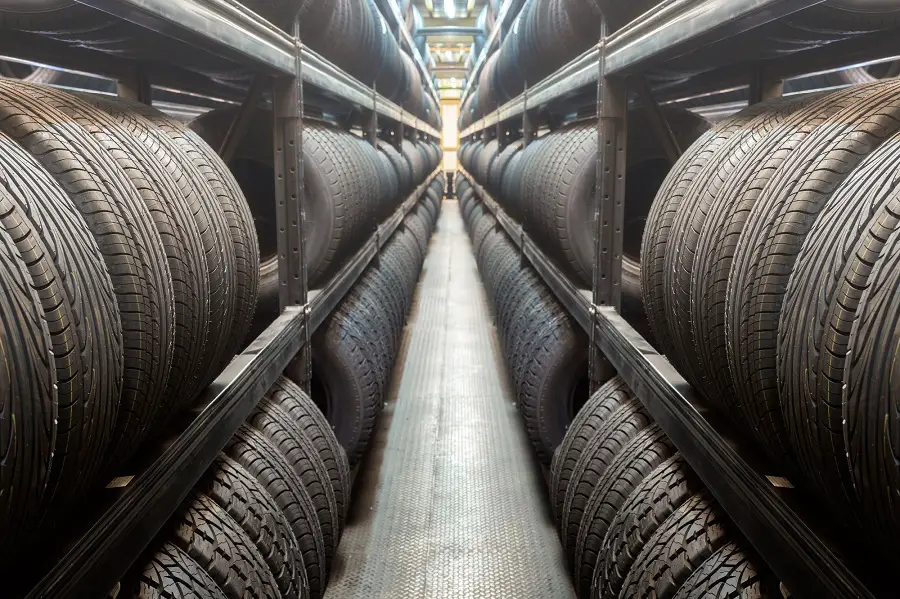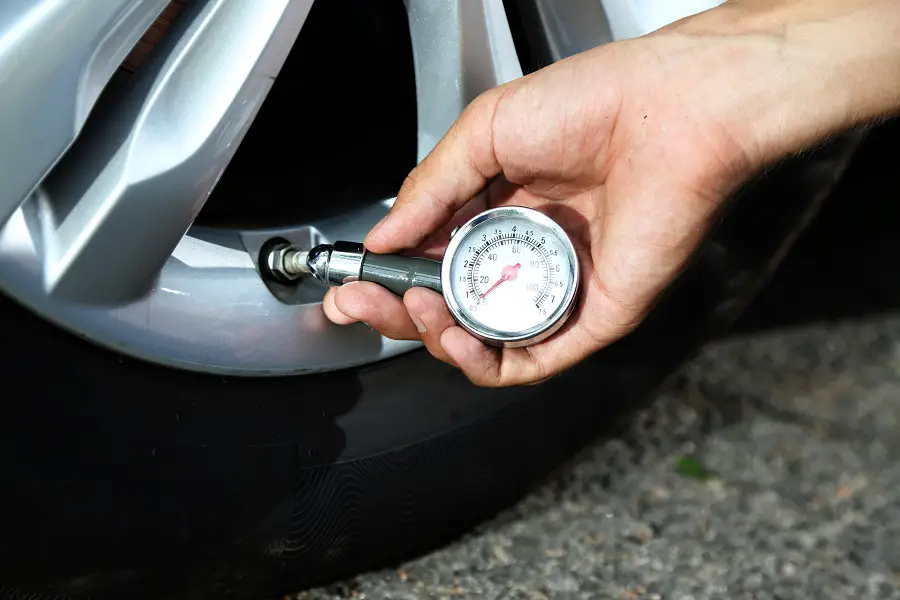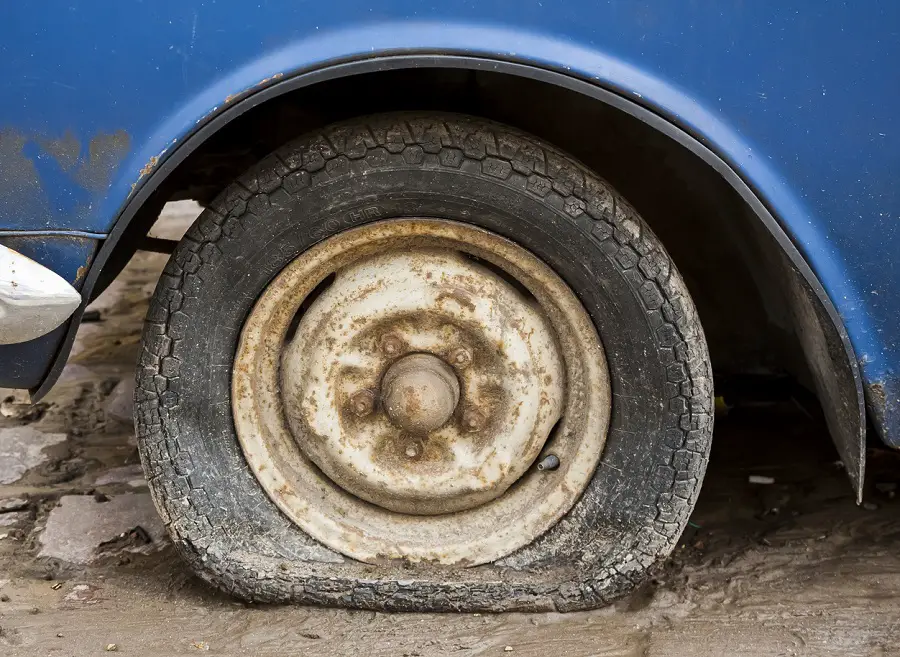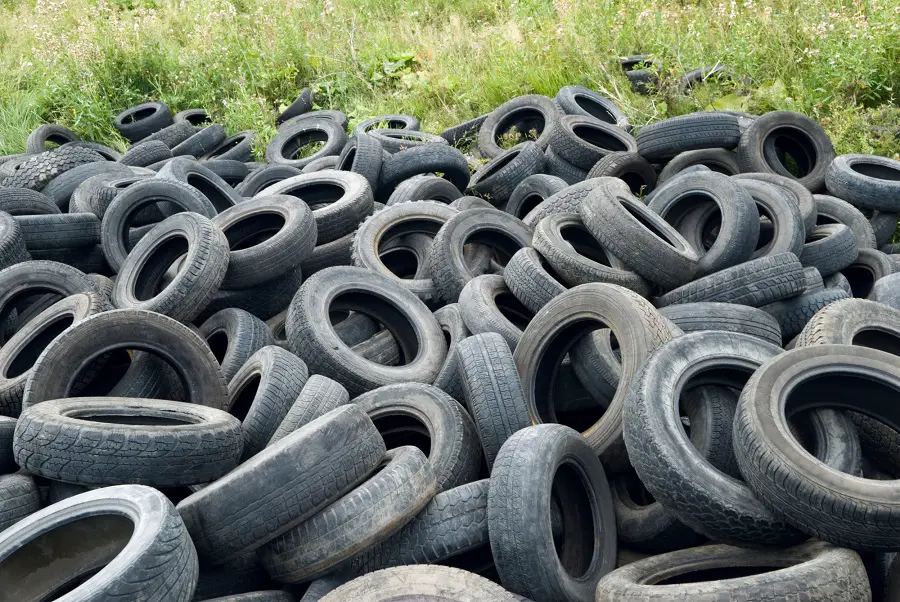My son and I recently had a conversation about tires and how to know if they have dry rot (I wrote all about it here). He asked me how to know WHEN tires will go bad.
While it’s difficult to predict when tires will actually go bad – especially if you count a blowout or tread separation as “going bad” – you can still get a good idea based on measuring tire wear and knowing their age.
Surprisingly, tire age and tire expirations are molded into tires and are set by the various tire manufacturers.
Because of the different rubber compounds used for the various grades, tire expiration dates range from 5 to 10 years. But many tire manufacturers state that tires expire six years after the date of manufacture. This date can be found using the DOT TIN stamped on all tires. Type of use, weather and other factors will influence tire durability but age is often the most overlooked.
Tire life expectancy wasn’t something I thought I’d get into, but working on projects with my kids and running an automotive website has lead me to answer many new & unique questions.
So, let’s get an answer if car tires expire and how do we know how old they are – and most importantly, do we need to celebrate our tires’ birthdays?!?
Do Tires Expire?
Yes, car tires have a limited service life. Some may deteriorate faster than others, depending on various factors. For example, winter tires may expire more quickly than all-season tires as they are a softer and stickier rubber compound. However, all tires expire at around 5 to 8 years.
But the expiration date isn’t explicit like it is on your eggs or milk. It’s not printed on the side of the tire, per se, but it can be calculated.
According to the NHTSA (National Highway Transportation Safety Administration), there are numerous studies that show that tires expire six years after the date of manufacture. There is a consortium of auto manufacturers who agree with this.
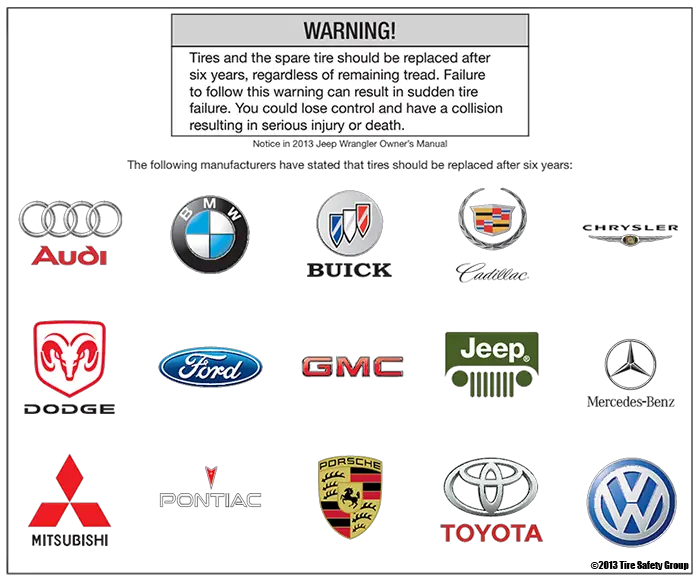
A tires expiration is most important for cars that aren’t driven frequently or for tires that aren’t used often – like your spare tire (this is a good reminder to go check your spare to ensure it’s holding air and that it isn’t expired).
Astonishingly, some tire retailers and end-users do not know tires have a shelf life and expiry dates. By default, tread depth is normally used as a measure for whether or not a tire is “getting old”.
Many tire shops will sell tires based on their expected durability in miles. A 30,000-mile tire or a 50,000-mile tire will be sold as such. They measure tire durability in average tread life and miles of tread life. But this only tells part of the story.
They don’t take into account HOW LONG it will take the driver to drive that many miles on the tires. If it takes someone ten years to drive 50K miles, they run the risk of having a tire fail just due to age before the tread ever wears out.
For someone who doesn’t drive very far, their tires may last a long time but after a certain amount of time, the tire will start to break down – regardless of how much they drive and how much tread is left. Rubber compounds will harden and crack with age.
So, only using tread wear to calculate tire “age” is a bad proxy since it isolates only one reason for tires to wear out. By using mileage, we’re missing the components of age and compound wear.
On the flip side, someone who drives many miles in a short amount of time will wear out their tires long before the expiration date. So does age matter to them? It could. Especially if they buy uncommon tire sizes, brands or profiles. As these are the tires more likely to be “aged” before ever leaving the shop.
But again, tire age and the expiration date are just two additional factors when it comes to determining when tires will go bad. You have to take all factors into account when assessing when a tire is past its prime (including use, tire size, road conditions, age, weather, moisture and other factors)
Expired tires can be dangerous, irrespective of their tread depth.
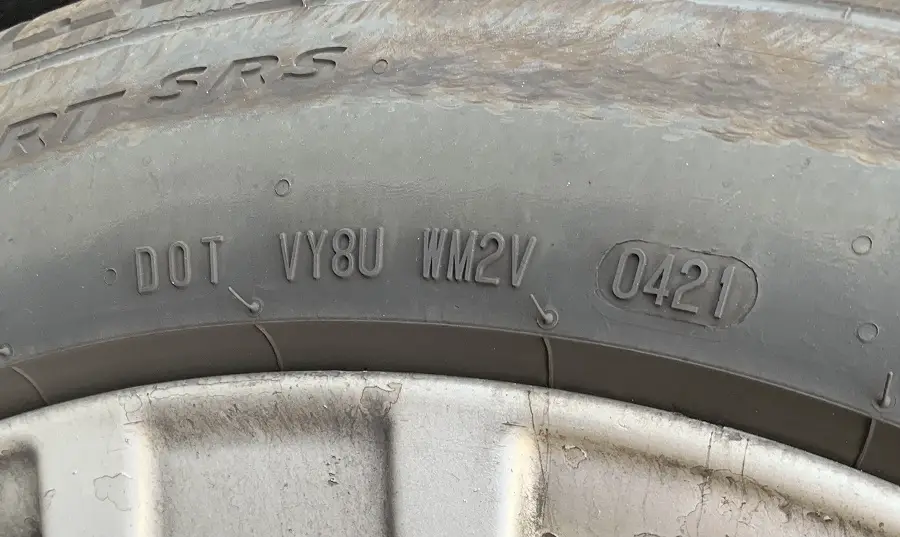
Are There Numbers on The Tire that Tell Their Age?
Yes, manufacturers mold numbers right on the tire that help determine its age or expiry date. These numbers are typically 10 to 11 characters called the DOT TIN (Department of Transportation Tire Identification Number).
This number shows the details of the manufacturing place of the tire. Where it was made and most significantly, it tells the precise year and week of manufacture.
It’s like your tire’s birthday.
If we are worried about what should be considered an old tire, we should understand how to read the DOT number.
The first two digits on the Tire Identification Number (TIN) represent the week of manufacture, while the last two identify the year. But, only tires manufactured after 2000 have a TIN. So, if your tire doesn’t have a TIN, you can assume it’s already expired.
If you don’t want to hassle with learning it yourself, take some time to visit a tire shop and ask them to tell you if your tires are old or worn out. They may tell you they’re fine or they may tell you they’re better suited for a tire swing – and shouldn’t be on your car!
If you want to know more, here is a YouTube video to explain more:
How Long Do Tires Last?
There is no predetermined answer because a tire’s life expectancy relies on many factors, including the terrain, weather, and use. However, on average, tires will last between 30,000 and 75,000 miles in typical conditions. Most vehicles cover about 10,000 miles per year; hence this is 3 to 6 years. Some can go up to 10 years.
If you don’t drive a lot, you’ll want to see how long your tire manufacturer says your tire can last. But, as mentioned above, this is just one factor and all factors can be influenced by other things, like the weather:
- In a Hot Tire Environment – Tires age faster in hot environments. The heat from the sun and friction generated, especially while braking, reduces a tire’s elasticity and oil in them. Therefore, the tires begin to crack, become brittle and wear faster.
- In a Wet Environment – Water does not impact tire rubber in a tangible capacity. However, if a tire has cracks or cuts, the moisture will accelerate the rust of the steel belts. Eventually, it will cause tire failure.
- In a Cold Environment – Low temperatures make the rubber in tires brittle. This makes them susceptible to breakage or cracking because their elasticity is lower.
Proper tire maintenance is the best way to enhance any tire’s durability. Examine tire pressure and alignment regularly, have routine checkups, and rotate them often (including your spare tire). Prevention is better than cure.
A tire failure can be a fatal eventuality of negligence. We recommend changing tires if we believe that they are too old. Checking the date of manufacture and estimate how many years of service are left is critical in order to take care of our lives and of others.
How to Tell if They’re Old/Bad
There are specific vital symptoms to watch out for so we know when tires are old. Most car owners trust the “coin test” to tell if they need new tires. If the treads go beyond the outer ring of the coin, they’re good to go. However, anything below that tells that they ought to be replaced.
Unfortunately, the coin test only estimates tread depth, and it is not ideal for SUV or All-Terrain tires. It also does not tell how old the tires are.
Here are five signs that we need to replace our tires or if they’re too old:
- They’re past their expiry date – Once tires exceed their expiry date, they are no longer fit for use as with any other commodity.
- Tire warning light – an indicator that looks like a U and an exclamation point in the middle that appears on the dash. This is a low-tire pressure warning system that could be a symptom of a more significant problem.
- Cracked tires – Tire age often leads to tire cracks or side cuts.
- Vibration – Tires that have worn out unevenly cause vibration in the steering wheel as we drive. Vibration may also result from lousy alignment; hence it’s crucial to have an expert diagnose the issue’s root.
- Bulges – A bulge or bubble on the tire reflects a damaged or aged internal frame of the tires, enabling pressure to reach the not-so-firm outer walls.
- Treadwear – New tires have about 10/32″ tread size. A tread is no longer safe if it goes below the 2/32″.
- Dry Rot – we did a dry rot deep dive in another article, but this is one major sign that a tire is old.
Over time, these symptoms will eventually make the tire go flat or, in the worst case, rupture. If the tires are misaligned and over or under-inflated, the wear and tear are accelerated.
While not specified, tires do have a service life since the date of manufacture. As a rule of thumb, replace any tires older than ten years and avoid tires older than six years. New tires may look okay, but the latent aging process may compromise their performance and credibility.
If They Hold Air, are They Still Drivable?
Every car tire eventually yields to the ravages of age. Even if they still hold air and are expired, they will get cracks both inside and out. Old tires may also rupture due to excessive heat while driving because the rubber has already degraded.
Driving on worn-out tires is unsafe for both the driver and other motorists as well. This may seem like we are bent on enhancing cautiousness, but some tire shops don’t sell or repair tires older than six years.
Such a policy may be in place to help shops avoid lawsuits in case a mounted or repaired tire deforms, explodes, or fails. They understand that the older a tire gets, the risk of sudden failure increases even when unused.
Even with low miles, worn tires present a safety hazard. For instance, old tires may have been a factor in actor Paul Walker and Roger Rodas’ death. Investigators observed that two of the tires on the Porsche Carrera GT he was driving were at least nine years old.
Even though they may look fine, old tires are experiencing a chemical process that breaks down the different components and that can make them unreliable or dangerous.
For many readers of GearSlap, we have cars that don’t get used every day. We may have project cars that sit for most of the time or racecars that only hit the asphalt at the track. It’s important that you remember to check that your tires aren’t old or expired before going on a long trip or a track day.
You don’t want that to ruin your weekend.
We want you and your car to come back without incident. And we want you to celebrate many more birthdays – for you or your tires.


